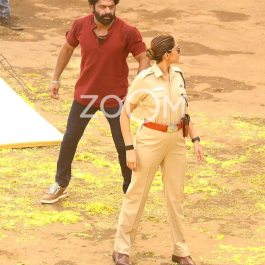
History:-
Cricket is a bat-and-ball team sport that is first documented as being played in southern England in the 16th century. By the end of the 18th century, cricket had developed to the point where it had become the national sport of England.The expansion of the British Empire led to cricket being played overseas and by the mid-19th century the first international matches were being held. Today, the game's governing body, the International Cricket Council (ICC), has 104 member countries.The rules of the game are known as the Laws of Cricket. These are maintained by the ICC and the Marylebone Cricket Club (MCC), which holds the copyright.
International Cricket Council (ICC):- The International Cricket Council (ICC) is the international governing body of cricket. It was founded as the Imperial Cricket Conference in 1909 by representatives from England, Australia and South Africa, renamed the International Cricket Conference in 1965, and took up its current name in 1989.
On 27 June 2007 it was announced that David Morgan the chairman of the England and Wales Cricket Board, would fill the role of ICC President from 2008, until 2010, when he will be replaced by Sharad Pawar, former president of the Board of Control for Cricket in India. The current CEO is Haroon Lorgat.
Marylebone Cricket Club (MCC) was founded in 1787 as a private members' club dedicated to the development of cricket.It owns, and is based at, Lord's Cricket Ground near St John's Wood in north London. MCC was formerly the governing body of cricket in England and across the world.MCC revised and reissued the Laws of Cricket in 1788. and remains the copyright holder.

Summary Cricket:-
A cricket match is played between two teams (or sides) of eleven players each on a field of variable size and shape. The ground is grassy and is prepared by groundsmen whose jobs include fertilising, mowing, rolling and levelling the surface. Field diameters of 140–160 yards (130–150 m) are usual. The perimeter of the field is known as the boundary and this is sometimes painted and sometimes marked by a rope that encircles the outer edge of the field. The field may be round, square or oval – one of cricket's most famous venues is called The Oval.
10 Ways of Dismissals:-
- Bowled: the bowler has hit the wicket with the ball and the wicket has "broken" with at least one bail being dislodged (note that if the ball hits the wicket without dislodging a bail it is not out).
- Caught: the batsman has hit the ball with his bat or with his hand and the ball has been caught before it has touched the ground by a member of the fielding side.
- Leg before wicket (lbw): first and foremost, the ball must, in the opinion of the on-field umpire, be going on to hit the stumps if the ball had not hit the pad of the batsman first. If the batsman plays an attempted shot to the delivery, then the ball must hit the batsman's pad in line with the stumps and be going on to hit the stumps for the batsman to be given out. If the batsman does not attempt to play a shot, then the ball does not have to hit the pad in line with the stumps but it still must be going on to hit the stumps. If the ball pitches outside the leg stump, then the batsman cannot be given out under any circumstances.
- Run out: a member of the fielding side has broken or "put down" the wicket with the ball while a batsman was out of his ground; this usually occurs by means of an accurate throw to the wicket while the batsmen are attempting a run.
- Stumped is similar except that it is done by the wicketkeeper after the batsman has missed the bowled ball and has stepped out of his ground, and is not attempting a run.
- Hit wicket: a batsman is out hit wicket, if he dislodges one or both bails with his bat, person, clothing or equipment in the act of hitting the ball, or when setting off for a run.
- Hit the ball twice is very unusual and was introduced as a safety measure to counter dangerous play and protect the fielders. The batsman may legally play the ball a second time only to stop the ball hitting the wicket after he has already played it.
- Obstructed the field: another unusual dismissal which tends to involve a batsman deliberately getting in the way of a fielder.
- Handled the ball: a batsman must not deliberately use his hand to protect his wicket (note that the bowled ball often hits the batsman's hand but this is not intentional by the batsman and so is not out; though he can of course be caught off his hand).
- Timed out usually means that the next batsman did not arrive at the wicket within three minutes of the previous one being dismissed
Field Division For Batsman:-

Division For Fielding:-

Matches and Competition:-
First ClassICC Test Championship (test league)
ICC Intercontinental Cup (tests for non test nations)
One Day ICC ODI Championship (one-day league)
ICC Cricket World Cup (50 over tournament)
ICC World Twenty20 (twenty20 tournament)
ICC Champions Trophy (miniature version of the world cup)
ICC World Cricket League (league for associate & affiliate members)
ICC World Cup Qualifier (qualifier for the world cup)
Test Match Team:-
England
Australia
South Africa
West Indies
New Zealand
India
Pakistan
Sri Lanka
Zimbabwe
Bangladesh
ODI Team:-
Australia
England
New Zealand
Pakistan
West Indies
India
Sri Lanka
Zimbabwe
Bangladesh
South Africa
The ICC temporarily grants ODI status to other teams; at present these are:
Kenya
Canada
Ireland
Netherlands
Scotland
Afghanistan
In addition, the ICC reserves the right to grant special ODI status to all matches within certain high profile tournaments, with the result being that the following countries have also participated in full ODIs:
East Africa
United Arab Emirates
Namibia
Hong Kong
USA
Bermuda
World Cup Team:-
Australia
West Indies
India
Pakistan
Sri Lanka
England
New Zealand
Zimbabwe
South Africa
Kenya
Bangladesh
Canada
Netherlands
Scotland
Ireland
Bermuda
Bermuda
Namibia
United Arab Emirates
East Africa
Word Cup Summaries:-
| Year | Stadium | Winner | Final Result | Runner-up |
| 1975 | Lord's, London | West Indies 291 for 8 (60 overs) | WI won by 17 runs | Australia 274 all out (58.4 overs) |
| 1979 | Lord's, London | West Indies 286 for 9 (60 overs) | WI won by 92 runs | England 194 all out (51 overs) |
| 1983 | Lord's, London | India | Ind won by 43 runs | West Indies 140 all out (52 overs) |
| 1987 | Eden Gardens, Kolkata | Australia 253 for 5 (50 overs) | Aus won by 7 runs | England 246 for 8 (50 overs) |
| 1992 | MCG, Melbourne | Pakistan 249 for 6 (50 overs) | Pak won by 22 runs | England 227 all out (49.2 overs) |
| 1996 | Gaddafi Stadium, Lahore | Sri Lanka 245 for 3 (46.2 overs) | SL won by 7 wickets | Australia 241 for 7 (50 overs) |
| 1999 | Lord's, London | Australia 133 for 2 (20.1 overs) | Aus won by 8 wickets | Pakistan 132 all out (39 overs) |
| 2003 | Wanderers, Johannesburg | Australia 359 for 2 (50 overs) | Aus won by 125 runs | India 234 all out (39.2 overs) |
| 2007 | Kensington Oval, Bridgetown | Australia 281 for 4 (38 overs) | Aus won by 53 runs on D/L | Sri Lanka 215 for 8 (36 overs) |
| 2011 | Wankhede Stadium, Mumbai | N/A | N/A | N/A |









